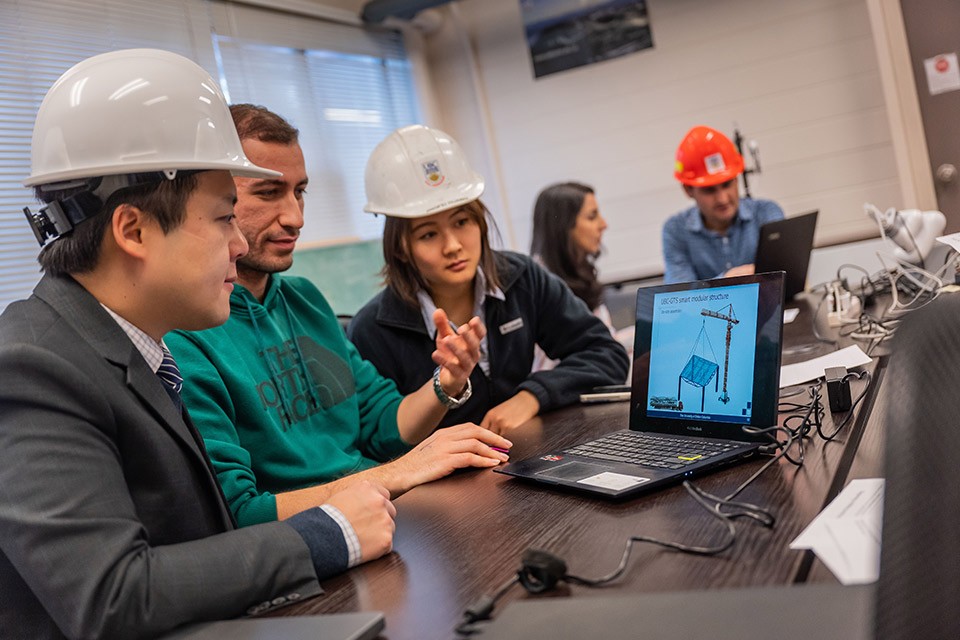UBC investigates next generation of construction tech
Professor Tony Yang and his team believe massive advances can be made by 2028.

Tony Yang, a civil engineering professor in University of British Columbia’s Faculty of Applied Science, is on a mission to usher in the next generation of construction technology.
He is leading a multi-university research project to reset national building standards for mass timber construction. Yang believes his latest research into carbon neutral, disaster-resilient timber construction may be the answer to addressing Canada’s urgent housing needs and climate change commitments by 2030.
The “Next Generation Wood Construction” project – a collaboration between 13 universities and 12 government and industry partners – has received $6.25 million in funding from the Natural Sciences and Engineering Council of Canada (NSERC), the largest NSERC Alliance grant in history.
Yang’s focus is to ensure that new materials, technology and guidelines for mass timber construction of up to 20 storeys are viable, economical and robust by 2028.
“Traditional construction has a lot of significant issues. There is a lack of skilled workers, there are long construction times, lots of waste with materials, poor quality assurance, and it’s affected by weather,” said Yang. “This next generation of mass timber construction will mark a turning point for how we build in this country – and potentially the world.”
Multiple challenges
Yang explained that Canada, like many other countries, is facing multiple challenges: build more housing and replace deteriorating infrastructure while reducing carbon emissions.
“The truth is, we are at the core of it, we are producing it and we must address it. If we don’t, many coast areas will be underwater,” said Yang.
He explained that the United Nations is projecting a rise in global population to 9.7 billion by 2050, more than 195,000 square kilometres will be needed to house this new population worldwide – equivalent to building the city of Vancouver five times every month for the next 30 years.
Yang believes that given the building industry is Canada’s third largest carbon emitter – and with Canada expected to spend $11 trillion by 2067 on new infrastructure, as well as to replace deteriorating infrastructure – there is more need than ever for smart, sustainable building innovation.
According to Yang, wood could be the answer to multiple problems.
He explained that with a much lower environmental footprint than concrete, or even recycled concrete, mass timber constructions holds enormous potential in helping Canada meet its climate goals of a 30 per cent reduction in carbon emissions by 2030, and to reach carbon neutrality by 2050.
Currently, mass timber construction goes up to only 12 storeys under Canada’s national building code. The project will deal with four key themes to enable safe, energy-efficient and sustainable mass timber construction of up to 20 storeys:
- Structural and serviceability performance
- Fire safety
- Building envelope and energy performance
- Sustainable construction technologies and practices
Other new technologies
In addition to leading the work on structural and serviceability performance, Yang is heavily involved in the research to develop sustainable construction technologies, such as quake-resilient modular construction, robotics and AI.
Yang explained that while modular construction is already used Singapore, the U.K., U.S. and Canada, these methods are not applied in quake-prone regions. Yang’s team aims to develop new modular construction that will excel at withstanding earthquakes in high seismic zones, while reducing the carbon footprint of such construction.
Yang and his collaborators are months deep into the research, and his team has already developed a prototype for a high-performance timber modular building.
When it comes to AI and robotics, Yang and his team are already working on prototypes.
“In the old days, that technology was not ready, but now it is. In the next few years we can develop design guides and codes. The whole goal is to replace the need for skilled workers on sites. Using robots is quick and efficient.”
They plan to begin testing a large-scale prototype construction robots soon.
“The next generation of construction technology is here,” said Yang. “We are going to reshape the way we do business to make infrastructure more economical, more resilient, faster to build and be a leading edge industry.”
He expects that the construction industry will be able to use these technologies in the field as early as 2028.

